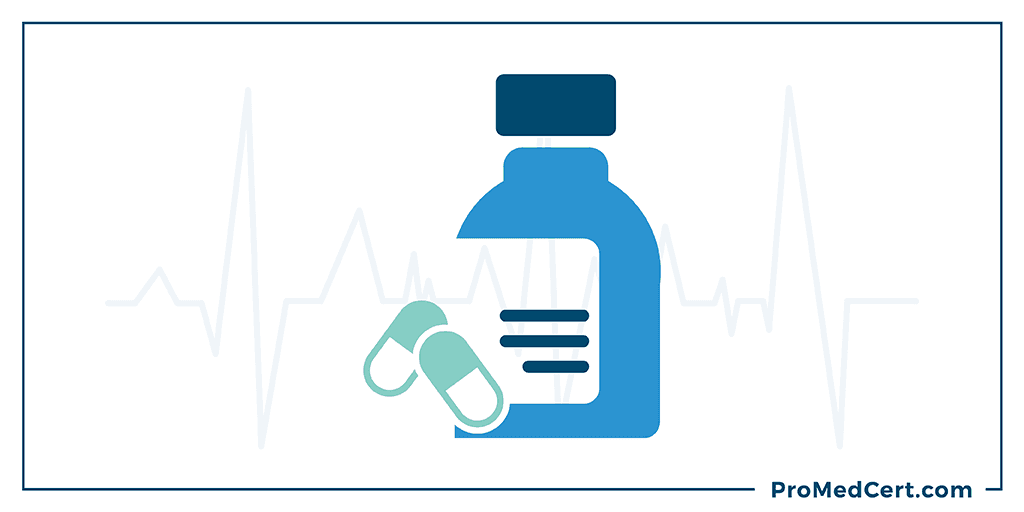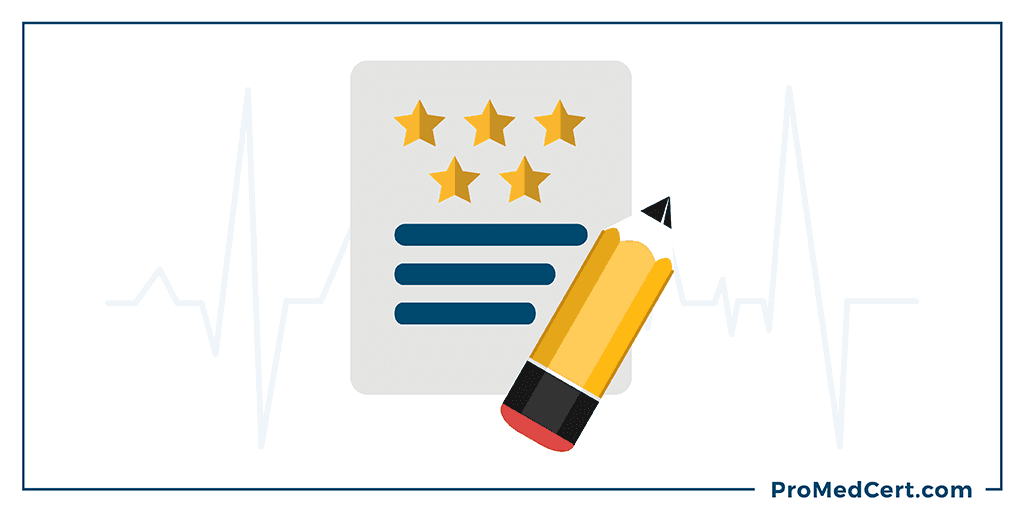Important PALS Medications You Need to Know

When it comes to passing your Pediatric Advanced Life Support (PALS) exam, there are many things you will be required to know.
Few of those things, however, are as important as studying and memorizing the medications.
This portion of the exam requires that you not only know the names of all of the drugs that you may use at some point in your career, but also their primary uses, which medication should be administered in which situation and the proper dosages of that particular medication.
To say it’s a lot to memorize is an understatement.
But if you want to pass your exam and obtain your online PALS certification, it’s something you must accomplish.
Let’s dive a little bit into what you should know as well as what you can expect when it comes time to take your exam.
Drawing from Experience

If you already work in the medical field, you may have already amassed a decent amount of hands-on experience working with medications in your day to day job duties.
In these instances, you may be able to draw from your practical experience and existing medical knowledge to help you pass your PALS exam.
In fact, many of the questions and proposed scenarios can be answered correctly simply by applying common sense.
Therefore, some questions will not require as much studying.
Beyond this, however, you will still need to commit to memory all of the required medications along with their uses and dosages.
That’s because in reality, it’s highly unlikely that you have on-the-job experience with every single drug that’s on the exam.
Furthermore, some of the medications have similar usages, etc., which can make it confusing when it comes time to take the test.
In other words, there’s really no way around it – regardless of your prior experience, this is still a section of the exam that you will need to memorize.
To make things easier, we’ve listed out all of the necessary medications you will need to know in order to pass your online PALS certification exam.
Below is a handy study guide / reference sheet that includes everything you need to know about the medications you will be tested on.
Adenosine
Primary Uses:
- SVT/PSVT
- Wide QRS Tachycardia
Dosages:
- First Dose: 0.1 mg/kg via IV Push (maximum dose: 6 mg.)
- Second Dose: 0.2 mg/kg via IV Push (maximum dose: 12 mg.)
Important Notes:
- Must be administered as a bolus, followed by a flush
- May cause bronchospasm - use caution when treating asthmatics
- Flushing and/or chest tightness are common
Amiodarone
Primary Uses:
- Pulseless VT
- Ventricular Fibrillation (V-Fib)
- Recurrent Hemodynamically Unstable Ventricular Tachycardia
- Hypertrophic Cardiomyopathy
- Supraventricular Tachyarrhythmias (SVT)
Dosages:
- Pulseless VT / V-Fib: 5 mg/kg bolus (maximum dose: 300 mg)
- VT / SVT: 5 mg/kg over 20-60 minutes (maximum dose: 300 mg)
Important Notes:
- Rapid infusion may result in hypotension
- If cumulative dosing exceeds 2.2 grams in a 24 hour period, significant hypotension may occur. Avoid administration with any drug that could prolong QT interval.
Atropine
Primary Uses:
- Symptomatic Bradycardia
Dosages:
- 0.02 mg/kg via IV (repeat every 3 – 5 minutes)
- Maximum single dose: 0.5 mg
Important Notes:
- Dosage of less than 0.1 mg may cause paradoxical bradycardia
- Maximum total dose: 1 mg (child) / 3 mg (adolescent)
Dopamine
Primary Uses:
- Bradycardia
- Hypotension
Dosages:
- 2 – 20 mcg/kg/min via infusion
- Titrated based on clinical response; tapered on/off slowly
Important Notes:
- Extravasation may result in tissue damage and necrosis
- Use caution if administering high doses via peripheral IV site
- May cause excessive vasoconstriction / tachyarrhythmias
- Adequate volume resuscitation is required prior to initiating dopamine therapy
Epinephrine
Primary Uses:
- Cardiac Arrest
- Symptomatic Bradycardia
- Severe Hypotension
- Anaphylaxis / Severe Allergic Reactions
Dosages:
- 0.01 mg/kg via IV/IO (0.1 mL of 1:10,000 solution)
- Repeat every 3 – 5 minutes
- IV fluid flush following each dose
Important Notes:
- In cases of beta-blocker or calcium channel blocker overdoses, higher doses are often needed. A continuous infusion may be required.
- High dose will not necessarily improve survival / neurological outcome
- High dose may cease myocardial dysfunction in post-resuscitation period
Glucose
Primary Uses:
- Hypoglycemia
Dosage:
- 0.5 – 1 g/kg via IV/IO
Important Notes:
- < 30 Days Old: D10W 5 – 10 mL/kg via IV/IO
- 30 Days – 2 Years Old: D25W 2 – 4 mL/kg via IV/IO
- Greater than 2 Years Old: D50W 1 – 2 mL/kg via IV/IO
Lidocaine
Primary Uses:
- Cardiac Arrest from VT / VF
- Ventricular Tachycardia
- Ventricular Fibrillation
Dosages:
- 1 mg/kg via IV/IO bolus
- Maintenance Infusion: 20 – 50 mcg/kg/min
Important Notes:
- May also be used for stable polymorphic ventricular tachycardia with normal baseline QT and torsades
- If left ventricular dysfunction or if impaired liver function, decrease maintenance doses
- Do not use prophylactically after myocardial infarction
Magnesium
Primary Uses:
- Torsades de Pointes
- Hypomagnesemia (low magnesium)
- Digitalis Toxicity
Dosages:
- Initial dose: 25 – 50 mg/kg via IV/IO over 15 – 30 minutes, diluted in 10 mg/mL D5W
- Maximum dosage: 2 g
Important Notes:
- Rapid administration may cause drop in blood pressure
- Very high doses can cause respiratory distress (calcium is antidote)
- Use with caution in patients with renal failure
Naloxon
Primary Uses:
- Opioid Reversal
Dosages:
- 0.01 – 0.1 mg/kg
- Maximum single dose:2 mg
Procainamide
Primary Uses:
- Ventricular Arrhythmias
- Supraventricular Arrhythmias (SVT)
Dosages:
- Loading Dose: 15 –mg/kg via IV/IO. Administer over at least 30 minutes
Important Notes:
- Serious reactions may occur for ventricular fibrillation, asystole, seizures, decreased platelets and neutrophils and can result in hemolytic anemia
- Other common reactions may include hypertension, bradycardia, angioedema, flushing and urticaria
Sodium Bicarbonate
Primary Uses:
- Metabolic Acidosis
Dosages:
- 1 mEq/kg via IV/IO (administered slowly)
- Maximum dose: 50 mEq
Important Notes:
- Ensure adequate ventilation before administering to prevent or correct respiratory acidosis
- Monitor pH with ABG results
Conclusion
There you have it!
All of the medications you will need to know in order to pass your online PALS certification exam.
Feel free to print this list out and use it as your study guide to help you memorize these important drugs, their uses, dosages and important notes.
Want to test your knowledge?
Try your hand at our PALS practice test.
And when you’re ready to sign up for your PALS course and/or take the exam, simply click here to get started today!

